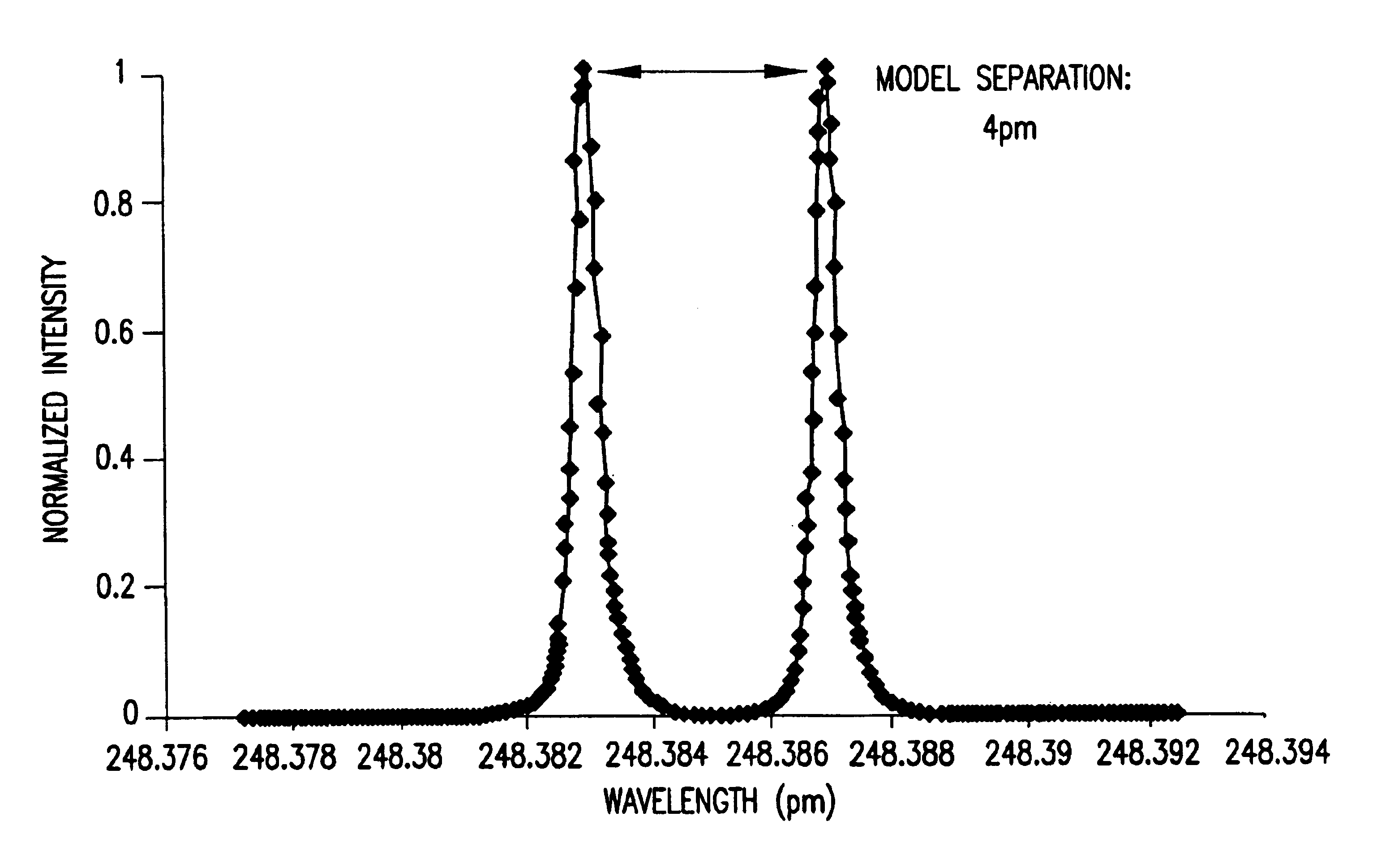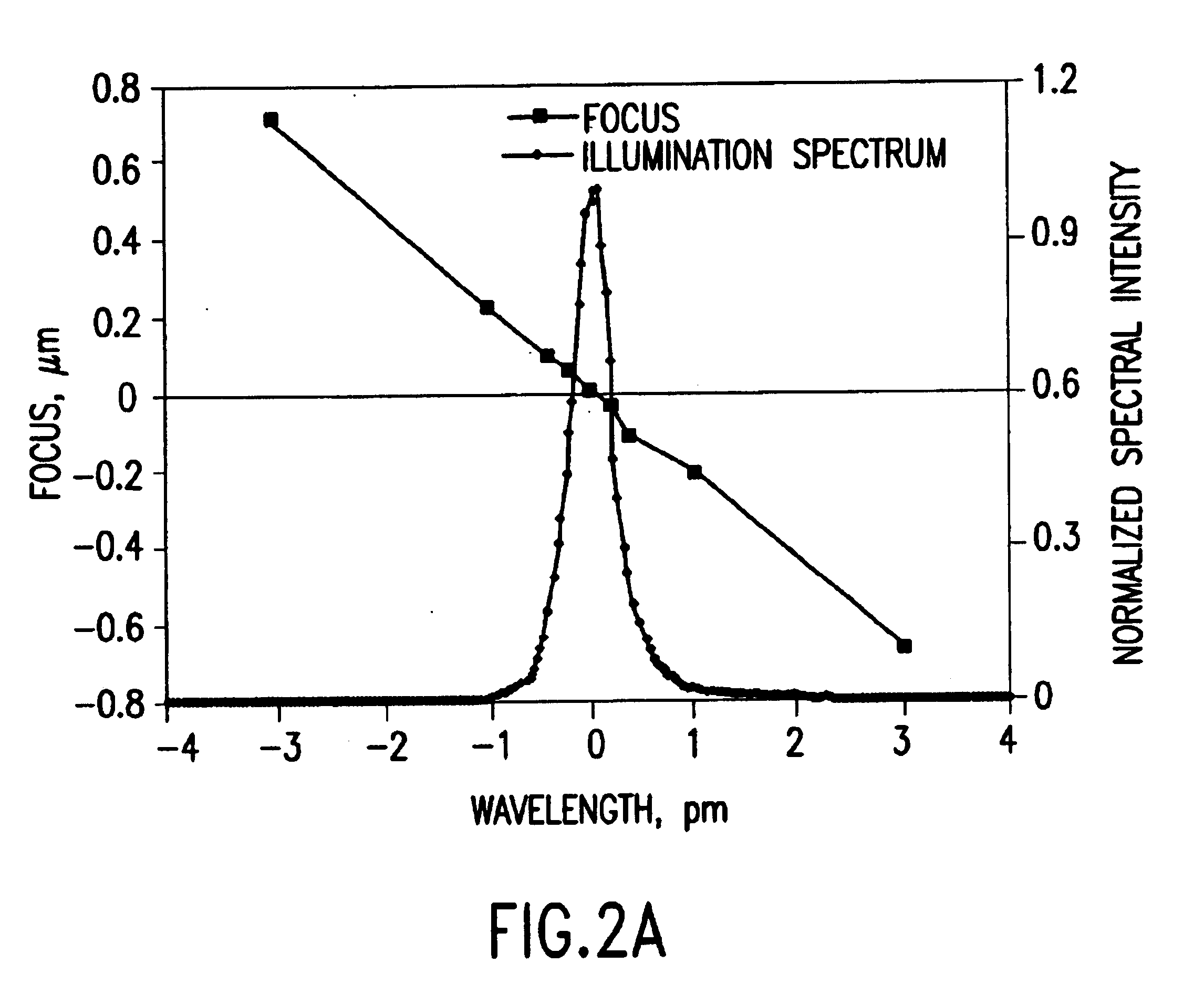Laser spectral engineering for lithographic process
a technology of lithographic process and laser spectral engineering, applied in the direction of beam/ray centering arrangement, active medium material, instruments, etc., can solve the problems of image blurring, additional overlay (image placement) errors, and inability to adjust for wavelength variations, so as to improve the pattern resolution of photo resist film
- Summary
- Abstract
- Description
- Claims
- Application Information
AI Technical Summary
Benefits of technology
Problems solved by technology
Method used
Image
Examples
Embodiment Construction
Simulation of the effects of wavelength and bandwidth changes have been performed by Applicants. The main effect of changing the exposure wavelength for a non-chromatic corrected lens is a change in the position of the focal plane. Over a fairly wide range of wavelengths, this change in focus is approximately linear with the change in the nominal wavelength (i.e., the central wavelength of the illumination spectrum). The wavelength response of a lens can be determined experimentally by manually changing the central wavelength of the laser and using the imaging sensor of the stepper to monitor the shift in focus that results. FIG. 1A shows an example of such a measurement.
Given the change in focus with change in wavelength, the use of a broadband illumination spectrum means that each wavelength in the spectrum will produce an aerial image with a different best focus. The total aerial image will be a sum of the aerial images at each focal position, weighted by the relative i...
PUM
| Property | Measurement | Unit |
|---|---|---|
| wavelengths | aaaaa | aaaaa |
| wavelengths | aaaaa | aaaaa |
| wavelengths | aaaaa | aaaaa |
Abstract
Description
Claims
Application Information
 Login to View More
Login to View More - R&D
- Intellectual Property
- Life Sciences
- Materials
- Tech Scout
- Unparalleled Data Quality
- Higher Quality Content
- 60% Fewer Hallucinations
Browse by: Latest US Patents, China's latest patents, Technical Efficacy Thesaurus, Application Domain, Technology Topic, Popular Technical Reports.
© 2025 PatSnap. All rights reserved.Legal|Privacy policy|Modern Slavery Act Transparency Statement|Sitemap|About US| Contact US: help@patsnap.com



